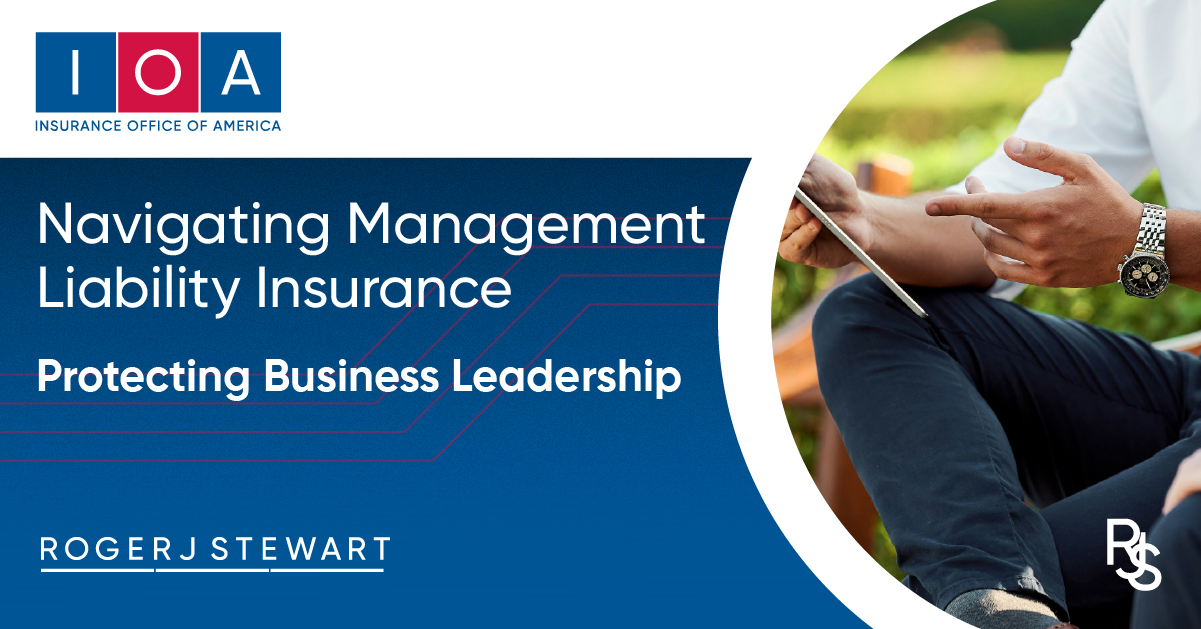 Management liability insurance is a crucial component of a company’s risk management strategy. It is designed to protect business leaders and the organization from claims arising out of wrongful acts committed in the course of managing the company. These wrongful acts can include allegations of mismanagement, breach of fiduciary duty, employment practices violations, and other managerial decisions that could lead to financial losses or legal actions.
Management liability insurance is a crucial component of a company’s risk management strategy. It is designed to protect business leaders and the organization from claims arising out of wrongful acts committed in the course of managing the company. These wrongful acts can include allegations of mismanagement, breach of fiduciary duty, employment practices violations, and other managerial decisions that could lead to financial losses or legal actions.
EPLI Market Outlook:
Is your management team covered with management liability insurance?
Key Risks and Coverage
Management liability insurance encompasses several key coverages:
- Directors and Officers (D&O) Liability:
- Protects directors and officers from personal losses if they are sued for wrongful acts while managing the company.
- Covers legal fees, settlements, and other costs associated with such claims.
- Employment Practices Liability (EPL):
- Covers claims related to employment practices, such as wrongful termination, discrimination, harassment, and retaliation.
- Provides protection against lawsuits from current, former, and prospective employees.
- Fiduciary Liability:
- Protects the company and its fiduciaries against claims of mismanagement of employee benefit plans.
- Covers legal defense costs and damages arising from breaches of fiduciary duty.
- Crime Coverage:
- Protects against losses resulting from criminal acts such as fraud, embezzlement, and theft by employees or third parties.
Industry Trends and Emerging Risks
The landscape of management liability insurance is constantly evolving, influenced by various industry trends and emerging risks:
- Increased Regulatory Scrutiny:
- Regulatory bodies are imposing stricter compliance requirements, leading to a rise in claims related to regulatory investigations and enforcement actions.
- Cybersecurity and Data Privacy:
- As cyber threats grow, there is a corresponding increase in claims related to data breaches and privacy violations. Management liability policies are expanding to address these risks.
- Environmental, Social, and Governance (ESG) Issues:
- Companies are increasingly held accountable for their ESG practices, leading to potential claims related to environmental impact, social responsibility, and corporate governance.
- Remote Work:
- The Covid-19 pandemic has introduced new risks related to remote work, including those related to remote work policies, employee health and safety, and business continuity planning.
Learn More From the IOA Management Liability Practice Leader (Video)
Tailoring Coverage to Client Needs
Effective management liability insurance requires tailoring coverage to meet the specific needs of each client. Factors to consider include:
- Industry and Business Size:
- Different industries face unique risks. For example, a tech company might prioritize cyber liability, while a manufacturing firm might focus on regulatory compliance.
- The size of the business also influences coverage needs, as larger organizations may require more extensive protection.
- Risk Assessment:
- Conduct a thorough risk assessment to identify potential vulnerabilities and exposures.
- Collaborate with clients to understand their risk tolerance and business operations.
- Policy Customization:
- Customize policies to include necessary endorsements and exclusions that align with the client’s specific risks.
- Regularly review and update coverage to adapt to changing business environments and emerging risks.
Contact Roger J. Stewart
Advice for Business Leaders
Business leaders should take a proactive approach to management liability insurance by considering the following advice:
- Stay Informed:
- Keep abreast of industry trends, regulatory changes, and emerging risks that could impact your business.
- Engage with insurance advisors and legal experts to understand the implications of these developments.
- Implement Best Practices:
- Develop and enforce strong corporate governance policies and procedures.
- Foster a culture of compliance and ethical behavior within the organization.
- Regularly Review Coverage:
- Conduct periodic reviews of your management liability insurance to ensure it remains adequate and relevant.
- Adjust coverage as needed to address new risks and changes in business operations.
- Invest in Training:
- Provide training for directors, officers, and employees on risk management and compliance best practices.
- Encourage ongoing education to stay updated on legal and regulatory requirements.
Conclusion
By understanding the complexities of management liability insurance and taking strategic steps to mitigate risks, business leaders can better protect their organizations and themselves from potential claims and financial losses. First, businesses seeking a better understanding of management liability coverage should review key risks and types of insurance options available such as Directors and Officers Liability (D&O), Employment Practices Liability (EPL), Fiduciary Liability, and Crime Coverage. Next, leaders should seek to understand emerging trends and emerging risks such as Regulatory Scrutiny and Data Privacy; Environmental, Social, and Governance issues (ESG); and remote work. With a thorough understanding of these issues, it is then possible to tailor a custom solution that takes the particular industry, business size, and other factors such as risk assessments into consideration. This article is designed to encourage leaders to take a proactive approach by staying informed on best practices, scheduling regular reviews, and staying educated with regular training.


